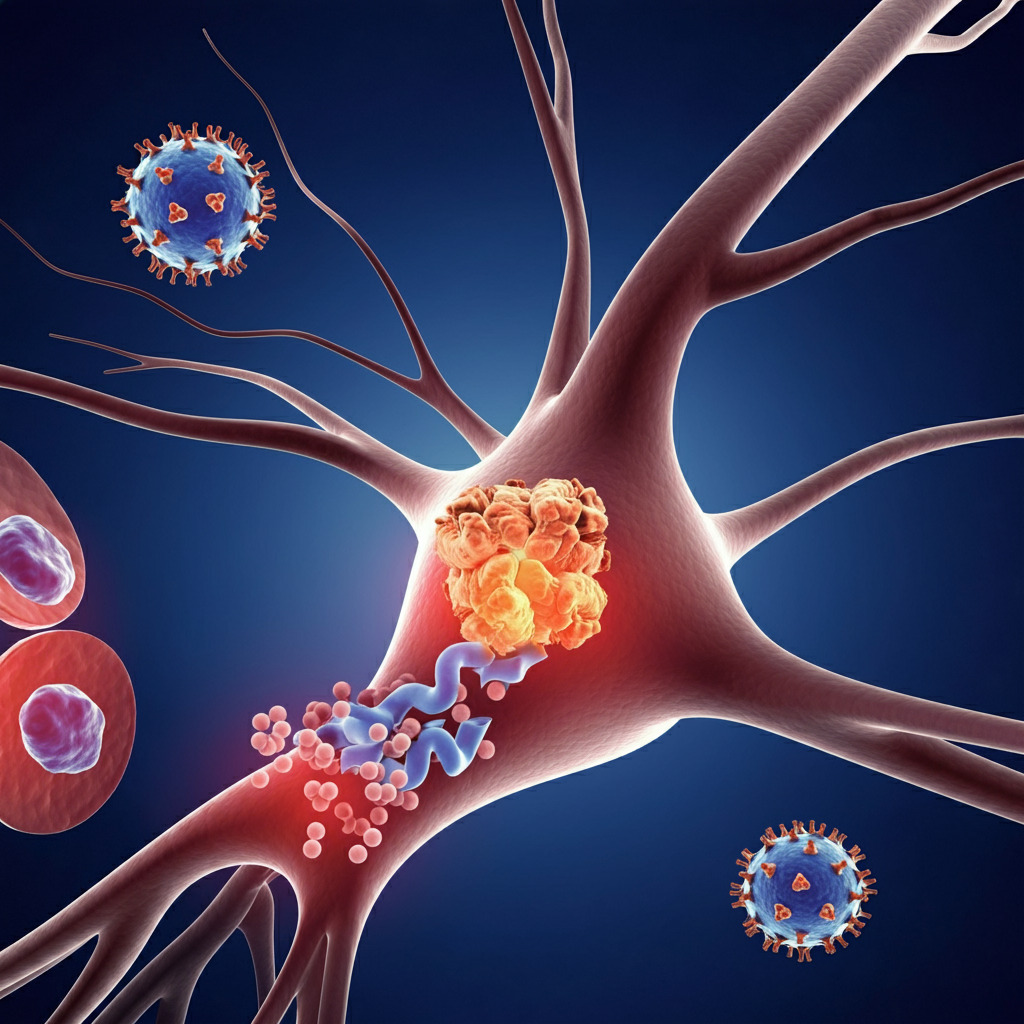

The researchers aim to develop treatments that avoid pain without affecting the immune system (image: Thiago Mattar Cunha/USP)
Through experiments in mice infected with a herpes virus, scientists identified an immune system sensor that recognizes viral fragments and activates neurons responsible for pain, independently of inflammation. The discovery paves the way for novel analgesic treatments.
Through experiments in mice infected with a herpes virus, scientists identified an immune system sensor that recognizes viral fragments and activates neurons responsible for pain, independently of inflammation. The discovery paves the way for novel analgesic treatments.

The researchers aim to develop treatments that avoid pain without affecting the immune system (image: Thiago Mattar Cunha/USP)
By Luciana Constantino | Agência FAPESP – An article published in the journal Brain, Behavior, and Immunity reports the findings of a study by researchers based in Brazil, the United States and South Korea who set out to understand how viral infections cause pain and to contribute to the search for novel ways of relieving it. The article shows that a channel known to mediate pain can be activated when an immune system sensor known as STING (stimulator of interferon genes) recognizes certain nucleic acids, such as viral DNA. STING is a key component of the innate immune system present in nociceptors, nerve cell endings that initiate the sensation of pain.
The researchers analyzed mice infected with herpes simplex virus 1 (HSV-1), a close relative of varicella-zoster virus (VZV), which causes chickenpox and shingles. They concluded that removing STING from nociceptors resulted in a significant reduction in pain without affecting inflammation or viral load.
The scientists believe the discovery that the STING signaling pathway is directly linked to pain, independently of inflammation, may also apply to other viral and bacterial infections, including COVID-19. Research showing pain-inducing interaction between SARS-CoV-2 and STING has recently been reported.
Pain is often one of the first symptoms of infection, but the processes by which it is induced are poorly understood. Immune cells normally recognize viral nucleic acids, which activate receptors and viral signaling, triggering an immune response. These receptors and viral signals are present in nociceptors.
“We show in this article that recognition of parts of the virus, probably DNA, by STING is involved in the process of pain induction. At least part of the process appears to be directly linked to neuron activation and not to inflammation. This opens up various perspectives. The main question now is whether it can make the individual more susceptible,” Thiago Mattar Cunha, co-corresponding author of the article, told Agência FAPESP. Cunha is a professor at the University of São Paulo’s Ribeirão Preto Medical School (FMRP-USP) in Brazil. The other corresponding author is Temugin Berta, associate professor at the University of Cincinatti’s College of Medicine in the United States.
Cunha explained that the group’s focus is on the role of this mechanism in protecting the subject against infection in order to develop therapeutic strategies that avoid pain without affecting the immune system.
“Pain has always been associated with the inflammatory process, but in the last decade a new concept has emerged in the scientific literature, suggesting that microorganisms – bacteria and fungi – can activate it by means of their ‘products’. More recently, research has found evidence that viruses can activate nociceptive neurons by expressing certain receptors, such as STING. We decided to explore this pathway,” said Cunha, who is a member of the Center for Research on Inflammatory Diseases (CRID), a Research, Innovation and Diffusion Center (RIDC) funded by FAPESP.
In 2017, Cunha co-authored an article published in the Journal of Neuroscience showing that immune mechanisms triggered by VZV, when reactivated, alter the functioning of sensory neurons and result in herpetic neuralgia (read more at: agencia.fapesp.br/25844).
At the time, one of the contributions of the research performed at CRID was validation of an animal model for studying the molecular mechanisms involved in herpetic neuralgia, also used in the research described by this latest article. Because VZV does not infect mice, the group used HSV-1, a related microorganism that can cause oral and genital skin lesions in humans.
Chickenpox, a highly contagious viral infection causing an itchy, blister-like rash on the skin, is a typical childhood illness. It is benign in most cases, but VZV, its causative agent, remains in the organism forever and can be reactivated years later, causing shingles (which frequently afflicts people with HIV/AIDS).
Brazil does not hold consistent data on the incidence of chickenpox, since notification is mandatory only for severe cases requiring hospitalization and deaths from the disease. However, the number of new cases per year is about 3 million, according to the Health Ministry’s estimates. An epidemiological analysis conducted in May 2024 found that 25,605 people were hospitalized for VZV infections between 2013 and 2023 and that 26% were aged 70-79.
Process
Activation of STING traditionally “recruits” the protein TBK1, which induces production of interferons, molecules essential to the immune response. The study showed, however, that inhibition of TBK1 reduced pain, while blocking of interferons had no effect, suggesting that STING can trigger pain via separate and independent pathways.
The study also showed that activation of STING activated the TRPV1 ion channel, leading to nociceptor depolarization. This post-transcriptional mechanism is also a new discovery over and above what was already known about STING signaling.
The article “STING recognition of viral dsDNA by nociceptors mediates pain in mice” is at: www.sciencedirect.com/science/article/pii/S0889159124004823.
Republish
The Agency FAPESP licenses news via Creative Commons (CC-BY-NC-ND) so that they can be republished free of charge and in a simple way by other digital or printed vehicles. Agência FAPESP must be credited as the source of the content being republished and the name of the reporter (if any) must be attributed. Using the HMTL button below allows compliance with these rules, detailed in Digital Republishing Policy FAPESP.





